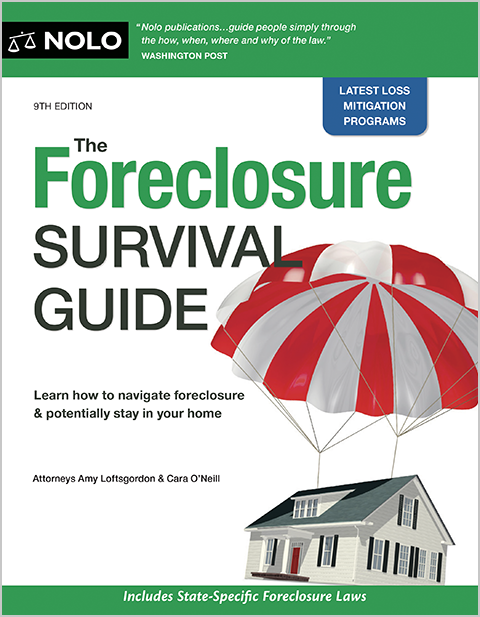Federal law prohibits some mortgages from having prepayment penalties, which are penalties for early payment of a mortgage.
For many kinds of new mortgages, the lender can't charge a prepayment penalty—a charge for early payment of your mortgage. Lenders charge prepayment penalties to discourage borrowers from paying off or refinancing their mortgages before the loan matures, causing the lender to lose interest income.
Under federal law, if your lender can charge a penalty for paying off your home loan early, it can only do so for the first three years of your loan and the penalty amount is capped.
Because prepayment penalties can hinder your efforts to pay down debt or build equity in your home, you might want to steer clear of loans that include them. Or you might be able to negotiate with your lender to remove or reduce prepayment penalties before finalizing your loan. If you already have such a loan and want to repay it ahead of time, consider paying it off after the penalty period expires.
What Laws Apply to Mortgage Prepayment Penalties?
The 2010 Dodd-Frank Wall Street Reform and Consumer Protection Act (Dodd-Frank Act) set requirements for mortgage creditors and servicers. The Consumer Financial Protection Bureau (CFPB) was charged with implementing these requirements and adopting new rules pertaining to lending and foreclosures.
In 2013, the CFPB set rules that went into effect on January 10, 2014. The CFPB rules prohibit prepayment penalties for most residential mortgage loans, except under a few specific circumstances.
What Is a Loan Prepayment Penalty?
A "prepayment penalty" is a charge the lender imposes on the borrower if the borrower pays all or part of the loan principal before its due date. For example, if you pay off your loan, refinance, or sell your home before a certain date, you might have to pay a prepayment penalty.
When Prepayment Penalties Are Allowed
Under the CFPB rules, a prepayment penalty is allowed if all of the following are true.
- The loan's APR can't increase after you take out the loan (for example, a fixed-rate loan).
- The loan is a "qualified mortgage." (A qualified mortgage is a type of loan that has certain, more stable terms that help make it more likely that you'll be able to afford your loan, such as a loan term of no more than 30 years and no risky features like negative amortization or interest-only payments.)
- The loan is not a higher-priced mortgage loan. (A higher-priced mortgage loan is a mortgage with an annual percentage rate higher than a benchmark rate called the Average Prime Offer Rate, which is an annual percentage rate that is based on average interest rates, fees, and other terms on mortgages offered to highly qualified borrowers.) (12 C.F.R. § 1026.43(g) (2024).)
Types of Mortgage Prepayment Penalties
Mortgage prepayment penalties come in two main forms: soft and hard.
What Are Soft Prepayment Penalties?
With a soft prepayment penalty, you can sell your home without incurring the penalty. But it would apply if you refinanced or paid off the loan.
What Are Hard Prepayment Penalties?
On the other hand, hard prepayment penalties apply when you refinance, pay off the loan, or sell your property.
Why Lenders Charge Mortgage Prepayment Penalties
Again, a prepayment penalty compensates the lender for the lost interest income if you pay off your loan early.
Restrictions On Prepayment Penalties
Even if a prepayment penalty is permitted, the penalty is subject to several restrictions.
Time Restriction for Prepayment Penalties—Three Years
A prepayment penalty is only allowed during the first three years after the loan is consummated. After three years, a prepayment penalty isn't allowed. (12 C.F.R. § 1026.43(g) (2024).)
How Lenders Calculate Prepayment Penalties
For the first two years after the loan is consummated, the penalty can't be greater than 2% of the amount of the outstanding loan balance. For the third year, the penalty is capped at 1% of the outstanding loan balance.
Lender Must Also Offer a Loan Option Without a Prepayment Penalty
In addition, if a lender offers a loan that includes a prepayment penalty, the lender must also offer an alternative loan that doesn't include a prepayment penalty. In doing this, the lender must have a good faith belief that the consumer likely qualifies for the alternative loan.
Lender Must Provide You With Information About Prepayment Penalties
Under the CFPB rules, if a loan has a prepayment penalty, the servicer or lender must include information about the penalty:
- on your periodic billing statement (which is usually sent monthly) (12 C.F.R. § 1026.41 (2024)) or
- in the coupon book (which is a book provided by the servicer or lender with a page for each billing cycle for a set period, often one year, where there borrower tears off a page or portion of the page and returns it to the loan servicer with each payment), and
- in interest rate adjustment notices.
Prepayment Penalty Rules Don't Apply to Pre-2014 Mortgages
The mortgage servicing rules regarding prepayment penalties went into effect on January 10, 2014, and don't apply retroactively. So, lenders didn't have to comply with these rules for mortgages made before January 10, 2014.
How to Determine If Your Loan Has a Prepayment Penalty
If you want to find out if your loan has a prepayment penalty, look at your monthly billing statement or coupon book. You can also look at the paperwork you signed at the loan closing. Usually, paragraphs regarding prepayment penalties are in the promissory note or sometimes in an addendum to the note.
What Are the Pros and Cons of Mortgage Prepayment Penalties?
Mortgage prepayment penalties have upsides and downsides. On the positive side, a loan with a prepayment penalty might have a lower interest rate. So, your monthly payment would be lower, and you could save money in the long run. (For the lender, the positive aspect of having a prepayment penalty is that it discourages a borrower from refinancing.)
The downside of having a prepayment penalty for the borrower is it can be costly to sell or refinance your home before the penalty period ends.
How to Avoid Mortgage Prepayment Penalties
To avoid mortgage prepayment penalties, consider selecting a mortgage with no or a minimal prepayment penalty. This process might involve negotiating with lenders or selecting a different mortgage product. Today, prepayment penalties are much less common than in the past, and you'll be able to find a loan without one.
If you already have a mortgage, you should understand its terms and carefully plan your repayment strategy. Thoroughly review your loan documents to identify any clauses related to prepayment penalties. If your mortgage loan has a prepayment penalty, you can consider making additional payments within any allowed limits specified in your contract. But don't pay off the loan until after the penalty period ends.
Be sure to communicate with your lender to explore repayment options and ensure you're fully aware of any potential costs associated with paying off your mortgage early.
For More Information
To learn more about the CFPB rules about prepayment penalties (and the other mortgage servicing rules that went into effect on January 10, 2014), go to the Consumer Financial Protection Bureau's website.
If you have questions about your mortgage, consider talking to a real estate attorney.

